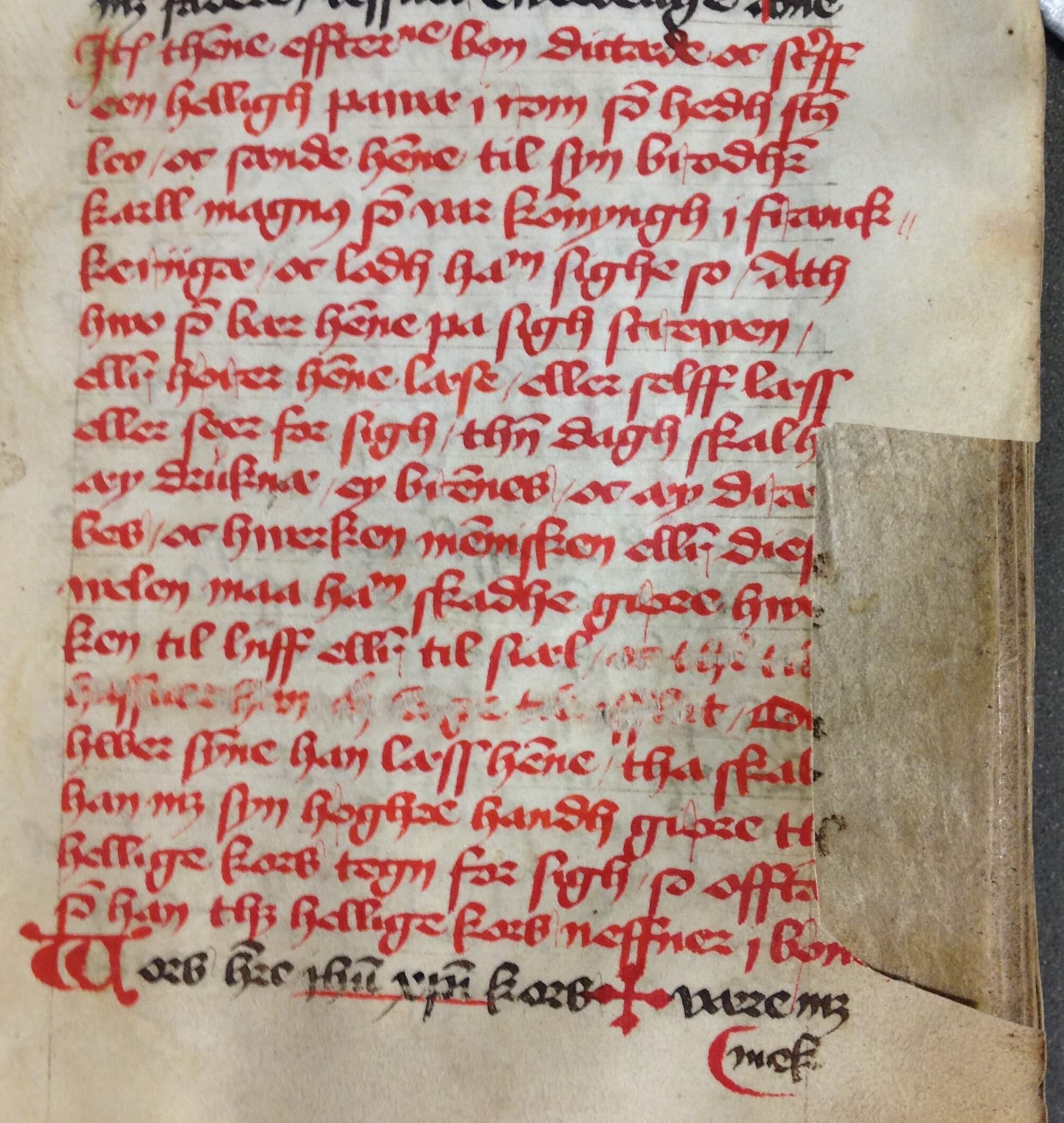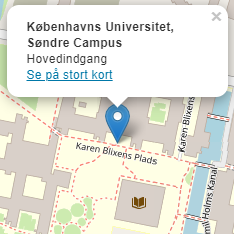With the Book Against the Bosom

Lecture by Laura Katrine Skinnebach (Aarhus University)
From medieval primers and prayer books, we get an impression of the complexity of medieval devotional practice. Devotion was distinctly multimodal and multi-sensory, involving, for example, wax candles, small portable figurines, images (in the book or elsewhere), prayer beads and nuts, and a series of bodily movements. Sometimes rubrics describe in great detail how a prayer text, an image or both should be carried on the body like protective amulets rather than read or looked at. Images and words had power.
During the Middle Ages, a host of technologies were developed that supported the haptic function of devotional amulets. One could sew an amulet into one’s clothes, carry the prayer around the neck written on a scrap of parchment, or carefully seal it off from the one’s eyes in an ampoule or keep the entire prayerbook close to the body in a pouch or girdle binding, to mention a selection.
This presentation will focus on amulets with texts and/or images in medieval devotional practice as described in a selection of especially Danish prayer books.
Find vej
Alle møder i Selskab for Nordisk Filologi afholdes på Søndre Campus/KUA. I hvilket lokale fremgår under det enkelte møde.
Kort over Søndre Campus
Vil du deltage online?
Foredragene kan også følges online via Zoom. Send en mail til snf@hum.ku.dk for at få et link.

